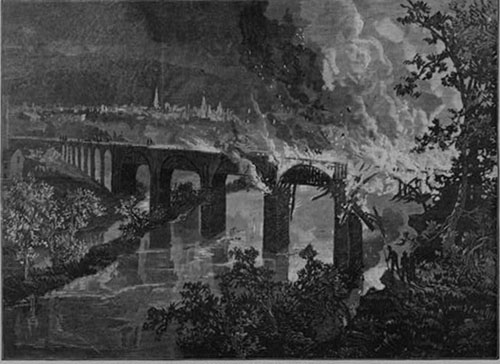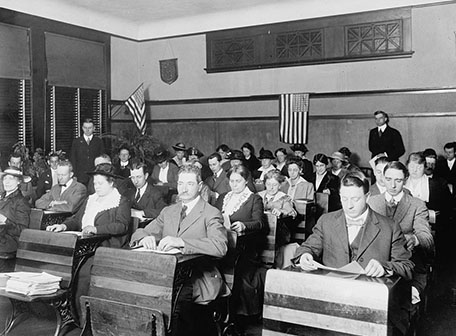This Inside FRASER post is drawn from a webinar presentation, “The Monthly Labor Review: 107 Years of Historical Data,” created by FRASER librarian Jona Whipple and Marie Concannon, Head of Government Information & Data Archives at the University of Missouri Library, Columbia, and creator of the Prices and Wages by Decade Guide. The webinar was presented before the Federal Depository Library Program (FDLP) Academy audience on June 22, 2022. A recording of the webinar, the slide presentation, and an audio transcript are available from the FDLP Academy.
For more than 100 years, the Monthly Labor Review has been the principal journal of fact, analysis, and research from the U.S. Bureau of Labor Statistics (BLS). Its comprehensive scope covers prices, family budgets, strikes and unions, working conditions, industry-specific issues, wartime economy changes, issues of women and minorities in the workforce, and much more. The Monthly Labor Review is now fully available in FRASER, with article-level metadata, high-quality scans of a century of tabular data, and the user-friendly features and functions you’ve come to expect from the FRASER experience.
The Beginning: Bureau of Labor Statistics & Monthly Labor Review
Following the Civil War, social reformers and labor organizations held repeated campaigns for a central Bureau of Labor. In the 1870s and 1880s, labor unions struggled with their image, as several strikes during this period turned into destructive riots, causing loss of life and property. Although labor unions were instrumental in carrying support for a national Bureau of Labor to the Senate,[1] their image at the time tarnished the idea of what the Bureau would be.

Established in 1869, the Massachusetts Bureau of Labor was run by Carroll D. Wright—a lawyer and former Massachusetts senator—from 1873 to 1878. When the Senate held hearings on the relationship of labor and capital in 1883, Wright appeared as an expert witness, showing the success of the Massachusetts Bureau and describing it as “a scientific office, not as a Bureau of agitation or propaganda.” The bill to establish the Bureau of Labor was approved in both houses and signed into law on June 27, 1884.[2] Wright was named Commissioner of the National Bureau of Labor.
In 1886, the National Bureau of Labor released its first Annual Report of the Labor Commissioner. The topics of the first several annual reports covered convict labor, industrial depressions, strikes, and working women in large cities. These studies presented data and additionally sought to explain the background of industrial unrest and propose remedies—something new for a statistical publication.[3] In 1895, the Bureau began to issue a series of Bulletins, with topics ranging from reports of state bureaus of labor statistics to reports on employment of women and girls and on wages and hours of workers in a variety of industries. The unprecedented need for this detailed labor data on a timely basis led the Bureau to create a monthly journal,[4] the first issue of which would debut in July 1915.
1915-1930: Wages, Women, and War
In 1913, the Bureau of Immigration and Naturalization Service, along with the BLS, was transferred to the Department of Labor. For this reason, one of the major focuses in the first several years of the Review was immigration. Within a feature titled “Federal Employment Work of the Department of Labor,” the Department transmitted information about what was being done to secure jobs for immigrants.[5] Another important topic of the time was conciliation, addressed in a feature that began to appear monthly in 1915 and that included a listing of disputes mediated by the Department of Labor and their results; it tracked the strikes and lockouts taking place over a given period. The earliest issues of the publication included a series of articles on the types of diseases encountered by workers in particular industries, such as tuberculosis, anthrax, and nystagmus afflicting workers in industries such as printing, fur and felt-hat manufacturing, and munitions.

Six months after the United States entered World War I, the Review published an unattributed article titled “Provision for Disabled Soldiers,” the first of a series that would appear over time with a focus on vocational education for the many wounded soldiers returning from the war.[6] Other wartime topics included prices of food and coal, changes to family budgets and wages, the effect of the war on certain industries, food control, and the employment of women and children during the war. The Review featured regular sections dedicated to the study of child labor and of women in industry, documenting the shift in their employment when the monumental wartime needs of the country drove them into the labor force.
1930-1980: Depression, New Deal, and Civil Rights
The 1930s opened on bleak times, and the Monthly Labor Review was there to document it all. Articles from the Great Depression cover widespread unemployment, the efficacy of New Deal programs, and the passage of the Social Security Act in 1935, which set off a flurry of articles analyzing cost of goods, cost of living, and expenditures of wage earners. Articles on agricultural migrants became more common, beginning with a 1936 piece on “Drought Refugee and Labor Migration to California, June-December 1935.”

The advent of World War II brought about new issues for discussion and investigation: After the United States entered the war, research began to center around how American war industries were coping with increased demands on the labor supply and productivity that were required to meet wartime needs. In the postwar period, unemployment in the nation was low, and the incidence of collective bargaining rose. Union membership was at its highest, and the Review began a series titled “Developments in Industrial Relations” to categorize the many articles published during those years.[7]
The 1960s began to see many historic changes, not least of all was the situation of Black people in the American economy. In 1964, the Review published “Poverty in America,” which looked at the systemic issues causing poverty and laid out a 12-point strategy to counter those causes. In 1967, four articles were published on the topics of race and discrimination, employment discrimination, racial policies of American industries, poverty and living conditions in Los Angeles communities, and discriminatory promotion systems in workplaces. In 1968, the Review released the groundbreaking special issue “Labor in the South,” including a variety of articles looking at discrimination, forces behind wage differentials, and income and levels of living.
At the end of the 1970s, average inflation was 11.3%, and price changes became a focus as the situation accelerated. The “Anatomy of Price Change” feature was added, presenting articles that attempted to interpret the upward spiral in inflation and prices experienced at the end of 1979.
1980-2022: Employment, Benefits, and Occupation
The nation continued to struggle with inflation, followed by a recession, in the early 1980s. However, this was also a time of employment expansion in the United States, which a 2000 article in the Review noted as “the longest running expansion in [its] history.” During this period, the Review documented factors contributing to changes in the labor force and featured articles discussing how employment was affected by major events, from 9/11 to Hurricane Katrina.[8]

In the 1980s, data from the Employment Benefits Survey (EBS) were used to report on topics such as sick leave benefits, income protection against short-term disabilities, and long-term disability insurance. Beginning in the 1990s, data on flexible work arrangements were included, followed in the early 2000s by articles and data focusing on the Family and Medical Leave Act. In 2000, the BLS introduced the National Compensation Survey, combining the EBS, the Employment Cost Index Survey, and the Occupational Compensation Survey and providing data regarding retirement benefits, pensions, and everything from orthodontic plans to the cost of prescription drug coverage shouldered by employees.
The Monthly Labor Review is the federal government’s oldest continuous publication,[9] and it contains a stunning amount of detailed data and thoughtful analysis. The information within can be used to study the evolution of many issues affecting labor and the economy over time, but it can also serve as a window into the many social and cultural changes the United States has experienced over 107 years. From war to peace, and from times of prosperity to times of suffering, the pages of this fascinating publication include a record of the American economic experience, proving the Monthly Labor Review to be a publication that becomes even more invaluable with the passage of time.
[1] Jonathan Grossman. “The Origin of the U.S. Department of Labor,” United States Department of Labor.
[2] The 1884 Act to Establish a Bureau of Labor was followed in 1888 by An Act to Establish a Department of Labor, which established the Bureau of Labor as a department without cabinet status. The Act to Create a Department of Labor passed in 1913 and established the Department of Labor as a Cabinet-level department.
[3] Joseph P. Goldberg and William T. Moye. “The First Hundred Years of the Bureau of Labor Statistics,” September 1985.
[4] John Walters. “The Monthly Labor Review: The Early Struggles of a Burgeoning Giant, 1915-1925,” Government Publications Review, Vol. 18, 1991.
[5] Brian I. Baker. “The Monthly Labor Review at 100 – Part I: The Early Years, 1915-1930,” Monthly Labor Review, U.S. Bureau of Labor Statistics, June 2016.
[6] Baker, June 2016 (see footnote 5).
[7] Brian I. Baker. “The Monthly Labor Review at 100 – Part II: The “Middle Years,” 1930-1980,” Monthly Labor Review, U.S. Bureau of Labor Statistics, May 2016.
[8] Brian I. Baker. “The Monthly Labor Review at 100 – Part III: Inflation, Employment, and the Labor Force Since 1980,” Monthly Labor Review, U.S. Bureau of Labor Statistics, June 2016.
[9] Lawrence D. Brown, Lisa M. Lynch, and Constance F. Citro. “Reflections on the Occasion of the 100th Anniversary of the Monthly Labor Review,” Monthly Labor Review, U.S. Bureau of Labor Statistics, January 2016.
© 2022, Federal Reserve Bank of St. Louis. The views expressed are those of the author(s) and do not necessarily reflect official positions of the Federal Reserve Bank of St. Louis or the Federal Reserve System.
